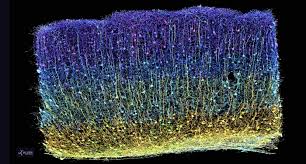
Breaking News
 Engineered backdoors in technology, have given intelligence agencies unfettered powers.
Engineered backdoors in technology, have given intelligence agencies unfettered powers.
 AI-Powered Robots Plant Trees in China's Deserts
AI-Powered Robots Plant Trees in China's Deserts
 Judge Temporarily Blocks DOJ From Using Evidence Proving James Comey's Guilt
Judge Temporarily Blocks DOJ From Using Evidence Proving James Comey's Guilt
 Offer Royale: Paramount-Netflix Bidding War For Warner Bros Heats Up In A Blockbuster Showdown
Offer Royale: Paramount-Netflix Bidding War For Warner Bros Heats Up In A Blockbuster Showdown
Top Tech News
 Build a Greenhouse HEATER that Lasts 10-15 DAYS!
Build a Greenhouse HEATER that Lasts 10-15 DAYS!
 Look at the genius idea he came up with using this tank that nobody wanted
Look at the genius idea he came up with using this tank that nobody wanted
 Latest Comet 3I Atlas Anomolies Like the Impossible 600,000 Mile Long Sunward Tail
Latest Comet 3I Atlas Anomolies Like the Impossible 600,000 Mile Long Sunward Tail
 Tesla Just Opened Its Biggest Supercharger Station Ever--And It's Powered By Solar And Batteries
Tesla Just Opened Its Biggest Supercharger Station Ever--And It's Powered By Solar And Batteries
 Your body already knows how to regrow limbs. We just haven't figured out how to turn it on yet.
Your body already knows how to regrow limbs. We just haven't figured out how to turn it on yet.
 We've wiretapped the gut-brain hotline to decode signals driving disease
We've wiretapped the gut-brain hotline to decode signals driving disease
 3D-printable concrete alternative hardens in three days, not four weeks
3D-printable concrete alternative hardens in three days, not four weeks
 Could satellite-beaming planes and airships make SpaceX's Starlink obsolete?
Could satellite-beaming planes and airships make SpaceX's Starlink obsolete?
The Immense Complexity of a Brain is Mapped in 3D for the First Time:

During the last seven years, a global team of more than 150 scientists collaborated on the most complicated neuroscience experiment ever attempted—and they've released their findings this week.
From a tiny sample of tissue no larger than a grain of sand, the MICrONS Project completed the first step toward the goal once thought unattainable: building a functional wiring diagram of a portion of the brain.
Now, they've published their findings in Nature with a collection of ten studies. The 3D wiring diagram and its data are massive—1.6 petabytes in size (equivalent to 22 years of non-stop HD video). They offer a never-before-seen insight into brain function and organization of the visual system.
The research started at Baylor College of Medicine where scientists used specialized microscopes to record the brain activity from a one cubic millimeter portion of a mouse's visual cortex while the animal watched various movies and YouTube clips.
Afterwards, Allen Institute researchers took that same cubic millimeter of the brain and shaved it into more than 25,000 layers, each 1/400th the width of a human hair, and used an array of electron microscopes to take high-resolution pictures of each slice.
By the end, the MICrONS Project—Machine Intelligence from Cortical Networks—built the most detailed wiring diagram of a mammalian brain to date—and it's freely available online.
"A watershed moment for neuroscience, comparable to the Human Genome Project" is the description from David Markowitz, Ph.D., who coordinated this work after leaving the IARPA, the US Intelligence Advanced Research Projects Activity, which partially funded it.
Another team at Princeton University used artificial intelligence and machine learning to reconstruct the cells and connections into a 3D volume. Combined with the recordings of brain activity, it contains 523 million synapses (the connection points between 200,000 cells) and a length of four kilometers of axons (the branches that reach out to other cells).
"Inside that tiny speck is an entire architecture like an exquisite forest," said Clay Reid, Ph.D., senior investigator and one of the early founders of electron microscopy connectomics who brought this area of science to the Allen Institute 13 years ago.
"It has all sorts of rules of connections that we knew from various parts of neuroscience—and within the reconstruction itself, we can test the old theories and hope to find new things that no one has ever seen before."

 First totally synthetic human brain model has been realized
First totally synthetic human brain model has been realized Mach-23 potato gun to shoot satellites into space
Mach-23 potato gun to shoot satellites into space

